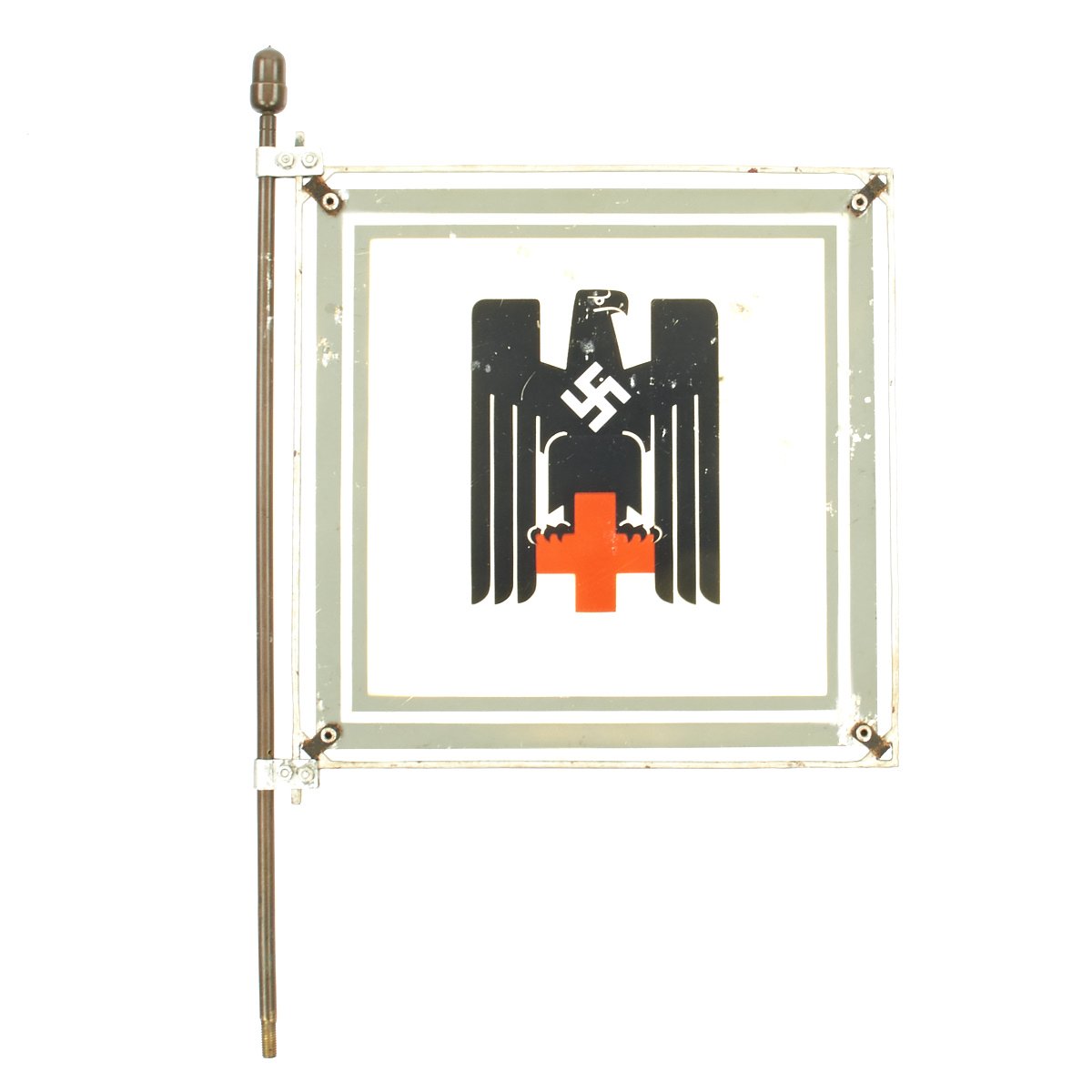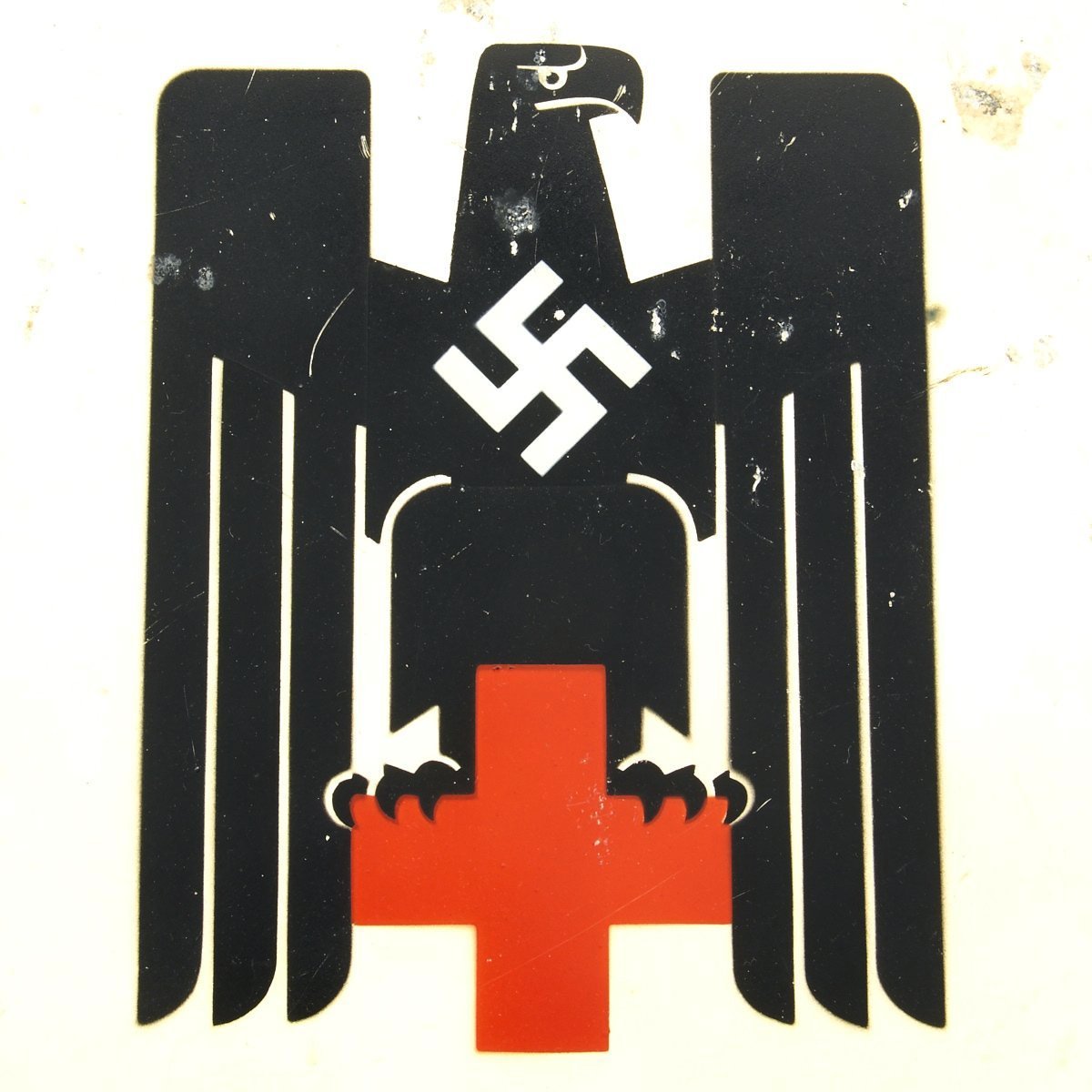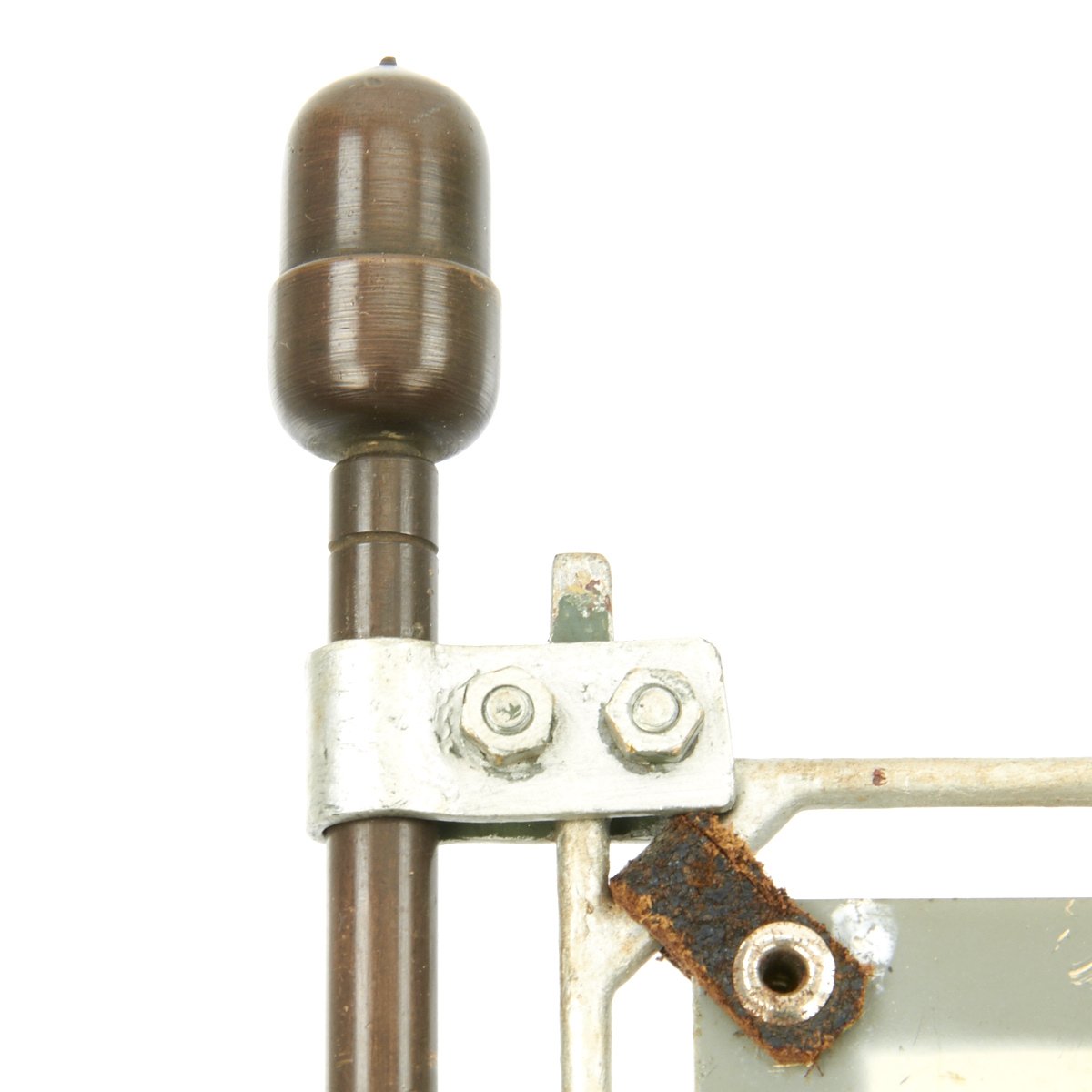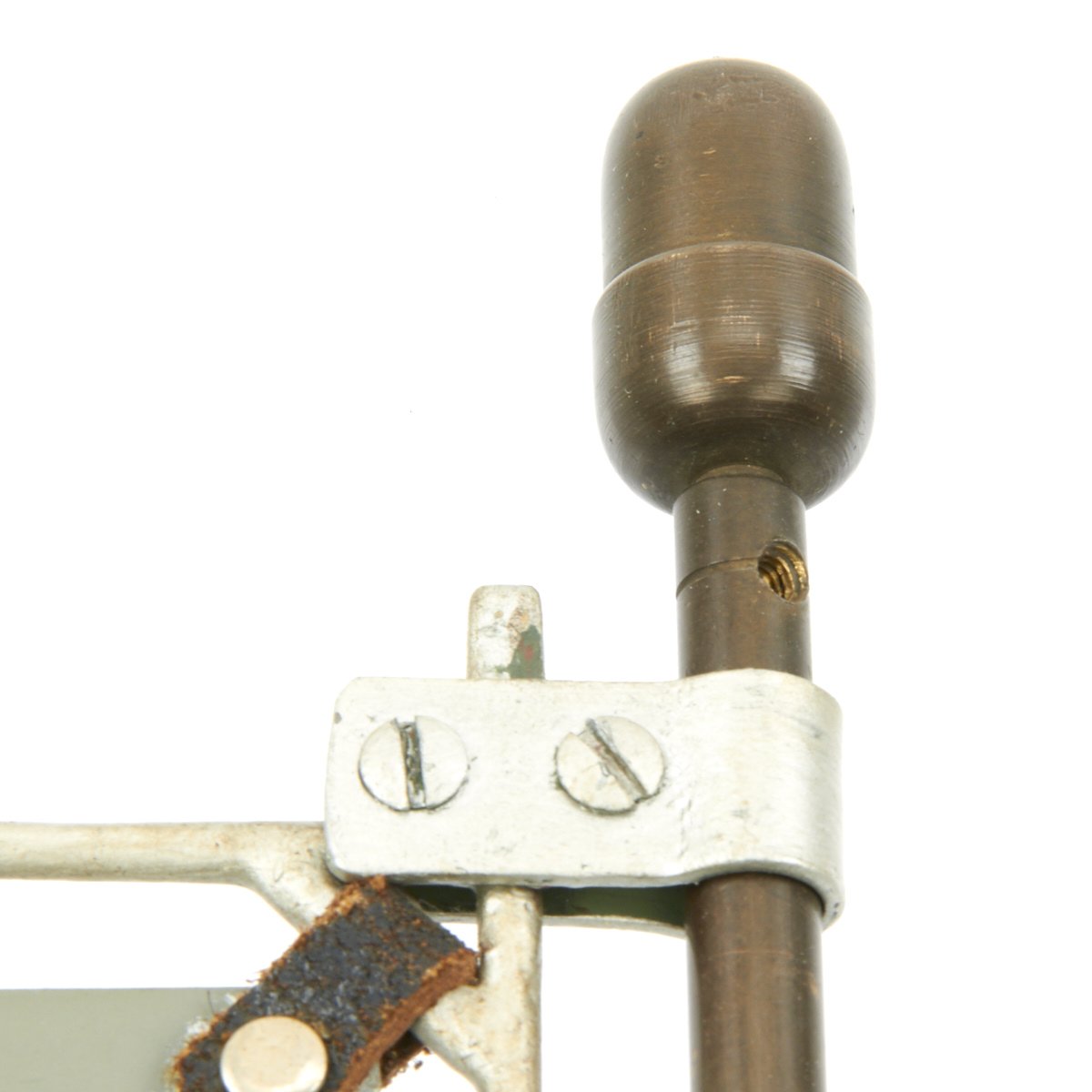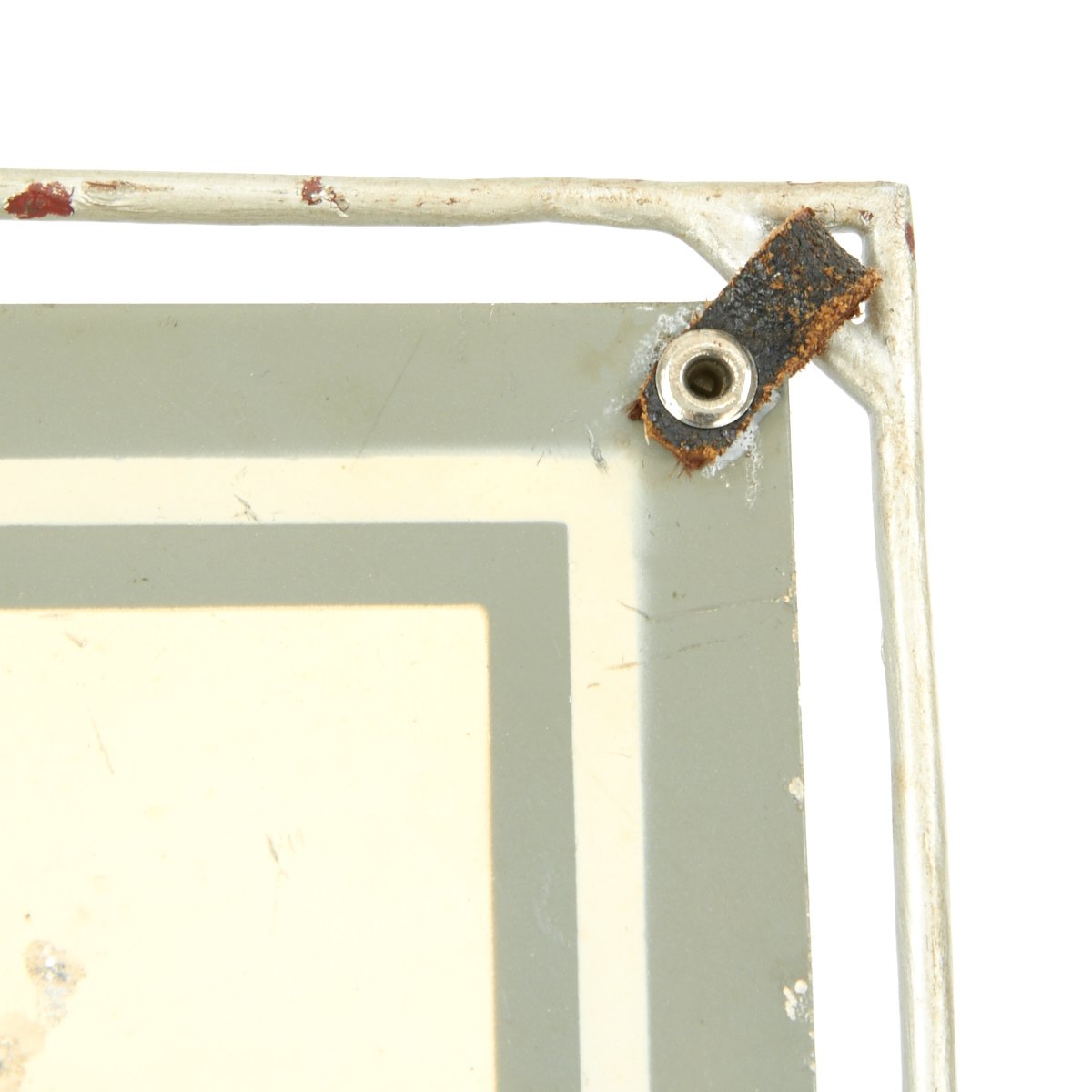Original German WWII DRK Officer Vehicle Car Fender Pennant – Deutsches Rotes Kreuz Original Items
$ 1.195,00 $ 298,75
Original Item: Only One Available. This an incredible excellent condition example of a WW2 German Deutsches Rotes Kreuz Car / Automobile / Vehicle Rigid Fender Pennant used for high ranking officer vehicles.
This Fender Pennant is double sided constructed of sheet metal and painted in full color. It is attached to a wire frame at each corner with leather loops which are riveted in place. The frame connects to a brass staff which has an acorn finial top and a threaded screw in base.
The pennant in frame measures 11.5 inches by 11.5 inches.
These wire framed fender pennants are exceptionally rare and were used for high ranking officer vehicles. You won’t find one this nice anytime soon!
The German Red Cross, or the DRK, is the national Red Cross Society in Germany.
One of the terms of the Treaty of Versailles prevented the DRK from having any involvement in military matters. As a result, during the Weimar Republic under the leadership of Joachim von Winterfeldt-Mencken, the DRK became a national organization focusing on social welfare. In April 1933 the NSDAP Reich Interior Minister Wilhelm Frick made it clear to Winterfeldt-Mencken that this policy would no longer apply; instead, the DRK would be expected to play its part in supporting the armed forces in any future conflict. Shortly after this the DRK was informed that the head of the SA Medical Corps, Dr. Paul Hocheisen had been given responsibility for voluntary nursing organizations.
On 11 June 1933 Frick was invited to speak at the Red Cross Day. He declared:
“The Red Cross is something like the conscience of the nation. … Together with the nation, the Red Cross is ready to commit all its strength for the high goals of our leader, Adolf AH”.
The DRK was quick to respond to the changed circumstances, indeed Winterfeldt-Mencken had always been opposed to the system of parliamentary democracy. The Workers’ Samaritan League, a left-wing humanitarian organization, had always been an unwelcome competitor to the DRK. Hocheisen very quickly arranged that it should be taken over by the DRK. Similarly, the DRK moved quickly to rid itself of left-wing members, and in June 1933 it also decided that the NSDAP “Law for the Restoration of the Professional Civil Service” should be applied and dismissed its Jewish employees.
However the DRK was still a member of the Red Cross movement, and Germany remained a signatory to the Geneva Convention, so it was not possible for them to apply the same level of “Gleichschaltung” to the DRK as it was to other organizations. The attitude of the ICRC towards the DRK’s exclusion of the Jews was later expressed in a letter written by Max Huber in 1939. According to him, the primary obligation of neutral treatment as foreseen in the Geneva Convention was to the victims of war, and not to the helpers. He argued that as it was impossible to prescribe rules which were in conflict with the laws of a country, it was better to take a flexible approach than to risk the break-up of the universal Red Cross movement.
Despite Winterfeldt-Mencken’s professions of loyalty to the regime, they were not reciprocated and a replacement was sought. President Hindenburg was able to influence the decision, and selected Charles Edward, Duke of Saxe-Coburg and Gotha who was Queen Victoria’s grandson, rather than Hocheisen. Charles Edward had moved from England to Germany at the age of 15, had subsequently served as a general in the German army in the First World War, and had long supported right-wing movements in general, and AH in particular. He was already honorary president of the National Socialist Motor Corps.
Charles Edward became President of the DRK in December 1933, while Hocheisen became his deputy. Not unsurprisingly, they did not work well together. There followed a typically NSDAP-Darwinist power struggle, in which Hocheisen was eventually able to assert his authority – only to be ousted by the top SS doctor – Ernst-Robert Grawitz – at the start of 1937. At the end of 1938 the German Red Cross officially came under the control of the Ministry of the Interior’s Social Welfare Organization, becoming de facto a NSDAP entity, led by Grawitz in the role of ‘acting president’, with Oswald Pohl as chairman of the board of administration. By this stage there was no doubt about who was in charge, though Charles Edward remained in his post until 1945. As he was related to European royalty and spoke good English, he was a useful figurehead for the DRK, but Grawitz was different – he would turn up to International Red Cross meetings in his SS uniform.Grawitz took a radical approach to his task. He introduced a hierarchical chain of command into the DRK, and arranged for a new large and imposing “representative”- presidential building to be constructed in Potsdam-Babelsberg, complete with a balcony from which speeches could be made. His ideal concept for the DRK was that of a “healthy structure which would fit itself organically into the laws of life in the National Socialist Third Reich”.
In the years after the NSDAP takeover, as well as adopting NSDAP salutes and symbols, the DRK introduced NSDAP ideology into their education. Rescue teams were trained in military conduct, basic concepts of National Socialism, genetics, racial hygiene and demographic policy. More senior staff – doctors, nurses and managers were educated in demographic policy, racial history, racial hygiene, the biology of inheritance and the foundations of genetics. As a preparation for war, the DRK focused on training people to deal with air raids and gas attacks and organized joint exercises with the police and the fire brigades.
Fast Shipping with Professional Packaging
Thanks to our longstanding association with UPS FedEx DHL, and other major international carriers, we are able to provide a range of shipping options. Our warehouse staff is expertly trained and will wrap your products according to our exact and precise specifications. Prior to shipping, your goods will be thoroughly examined and securely secured. We ship to thousands clients each day across multiple countries. This shows how we're dedicated to be the largest retailer on the internet. Warehouses and distribution centres can be located throughout Europe as well as the USA.
Note: Orders with more than one item will be assigned a processing date depending on the item.
Before shipping before shipping, we'll conduct a thorough inspection of the items you have ordered. Today, the majority of orders will be delivered within 48 hours. The delivery time will be between 3-7 days.
Returns
The stock is dynamic and we cannot completely manage it because multiple stakeholders are involved, including our factory and warehouse. So the actual stock may alter at any time. It's possible that you may not receive your order once the order has been made.
Our policy is valid for a period of 30 days. If you don't receive the product within 30 days, we are not able to issue a refund or an exchange.
You can only return an item if it is unused and in the same state as the day you received it. You must have the item in its original packaging.
Related products
Uncategorized
Uncategorized
Armoured Fighting Vehicles of the World: AFVs of World War One (Hardcover Book) New Made Items
Uncategorized
Uncategorized
Uncategorized
Uncategorized
Uncategorized
Uncategorized
Uncategorized
Uncategorized
Angolan Rebel 1970s era 60mm Inert Display Mortar from Angolan Civil War Original Items
Uncategorized
Uncategorized
Uncategorized
Uncategorized
Uncategorized
Uncategorized
Uncategorized
Uncategorized
Uncategorized
